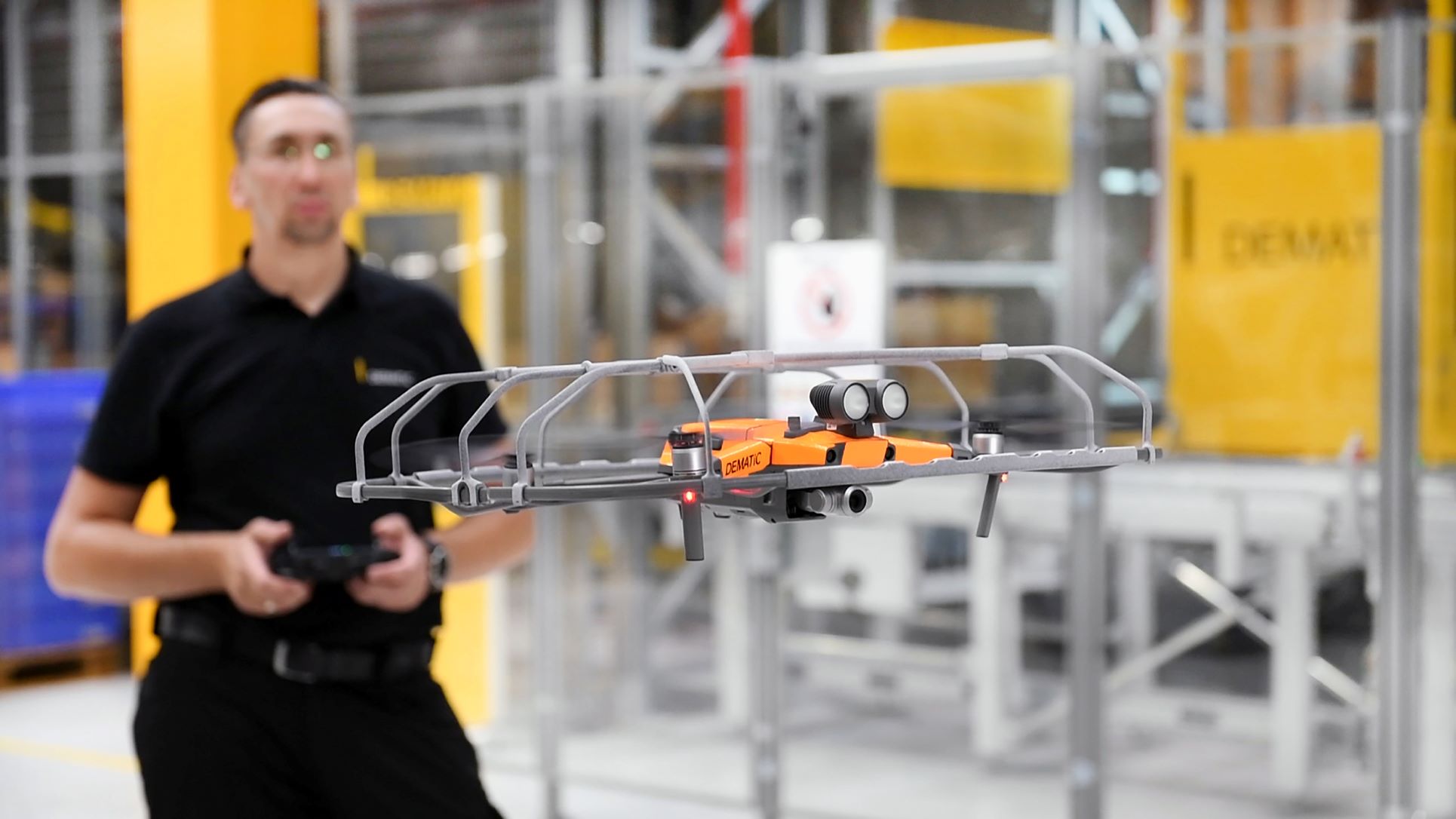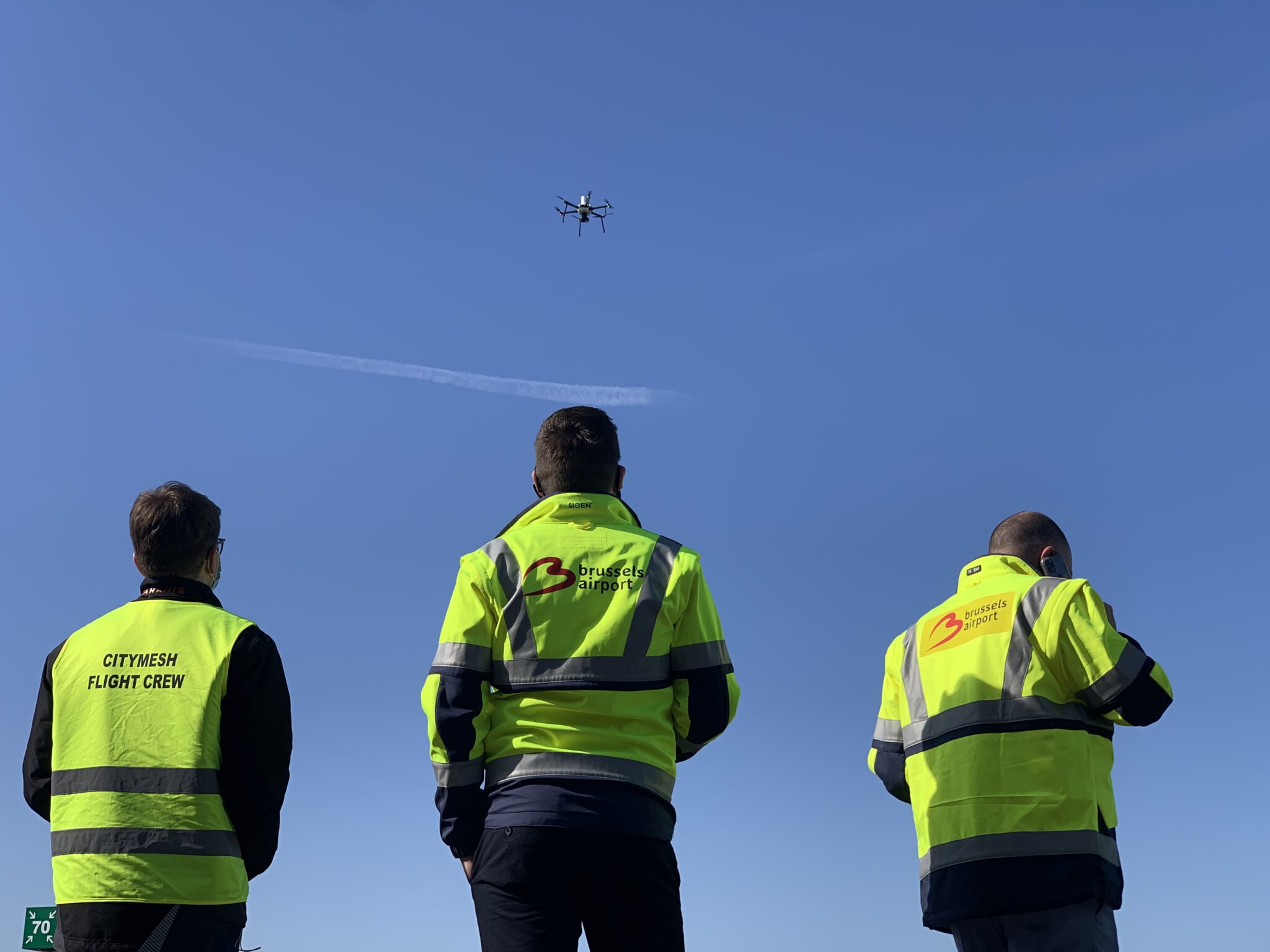Dematic now offers an innovative service for the entire inspection of intralogistics systems. Customers can conduct regular security checks and visual inspections with the help of drones. With Dematic Drone Inspection Services, monitoring and checking large automation systems, including automated storage and retrieval machines as well as equipment, stored goods and buildings, will be quicker and safer, reducing the need for service technicians operating complex safety equipment at high altitudes, all without loss of quality.
“Safety in the workplace always has the highest priority,” says René Sickler, Senior Director Value Added Services Dematic EMEA. “It’s why every safety-relevant system and component must be regularly inspected and checked for any flaws. With our Dematic Drone Inspection Services solution, facilities will be shut down for shorter, planned periods of time and started up again more quickly in a very safe environment for service employees.”
To efficiently implement this innovative approach across brands, the Central Technology & Innovation group at parent company KION GROUP AG handled the project management. Notes Sickler: “By combining our capabilities with KION, we quickly conquered the technical, organisational and regulatory challenges and created a new type of service which provides customers with real added value.” Dematic’s drone inspection services have been approved by the German Federal Aviation Office and the solution is currently available in Central Europe. Future plans call for rolling out the services internationally.
Avoiding long service downtimes
Currently, service technicians have performed visual inspections primarily using extensive amounts of safety equipment at significant heights. It requires complex precautions – sometimes even scaffolding – and can result in long downtimes as well as high costs. However, Dematic Drone Inspection Services can greatly reduce both of these issues.
The time required for a Dematic drone inspection is about 30 percent of the time needed to complete a manual inspection. The risk of an accident has largely been eliminated. Other service areas where drones are useful include interim inspections, monitoring congestion situations, facility management and analysis of emergencies such as accidents.
Equipped with high-resolution cameras and LED lights, the drones are controlled by trained, licensed Dematic service employees. The images and videos captured during the flight can be analysed both in real time and at a later date. Thanks to the quiet flight behaviour and the high image resolution, even the smallest details, such as test stickers on a column head, can be recorded and analysed. Another advantage for particularly difficult cases, offsite specialists can perform an evaluation remotely. Images can be used to create long-term documentation over a system’s entire service life.
The images are processed following strict adherence to data and privacy protection laws and regulations by blurring or eliminating respective objects within the photos. Access to data storage is also restricted and only possible with clear non-disclosure agreements in place.
“The use of Dematic Drone Inspection Services gives customers a tangible competitive advantage,” explains Sickler. Dematic is currently planning a global market launch for the innovative service technology and is exploring additional applications. In the future, the Dematic solution might conduct evaluations and record image and video material based on decisions informed by artificial intelligence and machine learning.




